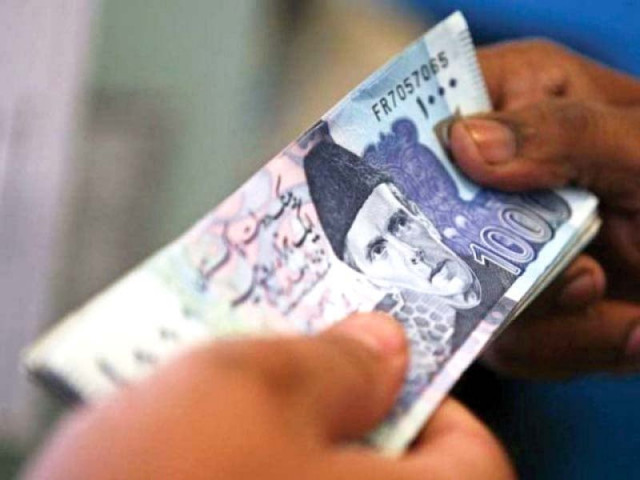Each Pakistani now owes Rs175,000
Fiscal Policy Statement shows per person burden increased Rs21,311 in one year

The government has apprised the National Assembly that the per capita debt jumped to Rs175,000 at the end of last fiscal year - an additional burden of Rs54,901 or 46% on every citizen within two years.
In the Fiscal Policy Statement of 2020-21, the Ministry of Finance also admitted that the government violated the Fiscal Responsibility and Debt Limitation (FRDL) Act of 2005 by failing to reduce the federal fiscal deficit to 4% of the size of national economy.
The federal deficit stood at 8.6% of GDP - more than double the limit set by the law, it added.
The statement had been submitted with the National Assembly Secretariat and was on the agenda of assembly proceedings on Thursday.
It is probably the thinnest-ever policy statement, carrying very little information, since the practice began to apprise the elected representatives of people of the state of fiscal affairs.
Officials said that the Debt Policy Office had presented a detailed draft of the policy to the finance ministry which ordered to squeeze the pages to hardly 11, including the title.
This is despite the fact that the FRDL Act of 2005 binds the government that the Fiscal Policy Statement shall contain “the analysis to the fullest extent possible of all policy decisions made by the federal government”.
The 11-page report also carried irrelevant information and most of the critical information that was part of the 2019-20 policy was missing.
The supposedly annual flagship Fiscal Policy Statement revealed that current expenditures of all the five governments remained at a 28-year high level in last fiscal year 2019-20. Compared to that, development spending was the lowest in 10 years in terms of total size of the economy.
Total expenditures in terms of the size of economy were at the highest level in 21 years - at 23.1% of GDP.
The Fiscal Policy Statement showed that the total public debt was recorded at Rs36.4 trillion at the end of June 2020. Resultantly, the public “debt per capita stood at Rs175,000 at end-June 2020”. The per person debt burden increased by Rs21,311 or 14% in the last one year.
The Ministry of Finance has worked out the per capita debt on the assumption of total population of 208 million.
During the Pakistan Tehreek-e-Insaf (PTI) government’s tenure, the per capita debt has jumped by 46% or Rs54,901, according to the Fiscal Policy Statements of the two years of PTI government.
In June 2018, the total public debt was Rs24.9 trillion and the Ministry of Finance at that time worked out the per capita debt at Rs120,099.
In PTI’s first year, the per capita debt increased 28% or Rs33,590 and in the second year it rose by another 14%. But the government has again blamed the previous (PML-N and PPP) governments for the debt burden that it added in the past two years. “The government paid Rs2.6 trillion against interest payments on the debt mostly obtained by the previous regimes,” according to the statement.
However, it did not tell how much cost of interest was added due to wrong policies of the central bank.
In the second last Fiscal Policy Statement, the Ministry of Finance had made full disclosure of the breach of FRDL Act by mentioning clauses related to reduction in the total public debt-to-GDP ratio, the annual limit set to reduce the debt and the status of new guarantees. All these clauses have been deleted from the latest report.
The Fiscal Policy Statement showed that the federal and provincial governments cumulatively collected Rs1.1 trillion or 15% less taxes compared to the targets. But their expenditures too were Rs854 billion or 8% lower than the budget figures.
The federal government collected Rs936 billion less revenue compared to the target and its expenditures were also Rs80 billion less than the amount approved by parliament.
Total development spending by the five governments slipped to the lowest level in over a decade to a mere 2.8% of GDP. Federal development spending was only 1.3% of GDP.
In fiscal year 2019-20, the government had set the FBR’s revenue collection target at Rs5.5 trillion but the actual collection was less than Rs4 trillion. The policy statement stated that the collection fell because of Covid-19 that crippled Pakistan’s economy.
In the second last Fiscal Policy Statement, the Ministry of Finance had given a historical perspective of fiscal indicators. These have been deleted in the new policy.
This is not for the first time that the finance ministry has done such things. Earlier, it had printed a very thin budget-in-brief book.
The statement showed that total expenditures by the federal and provincial governments increased to 23.1% of GDP - up 1.5% of GDP. But these were the current expenditures that shot up to a 28-year high of 20.4% of the total size of economy, according to the finance ministry.
The finance ministry informed the house that development expenditures slipped to the lowest level in 10 years at 2.1% of GDP.
Last time, in fiscal year 2010-11, the development expenditures were equal to 2.8% of GDP.
On the revenue front, the total revenues increased to 15% of GDP. The tax revenues stood at 11.4% -slightly lower than the previous fiscal year. The non-tax revenues increased to 3.6% of total size of national economy - the highest level in past six years.
The finance ministry has also deleted paragraphs on budget strategy targets.
Published in The Express Tribune, February 5th, 2021.
Like Business on Facebook, follow @TribuneBiz on Twitter to stay informed and join in the conversation.


















COMMENTS
Comments are moderated and generally will be posted if they are on-topic and not abusive.
For more information, please see our Comments FAQ